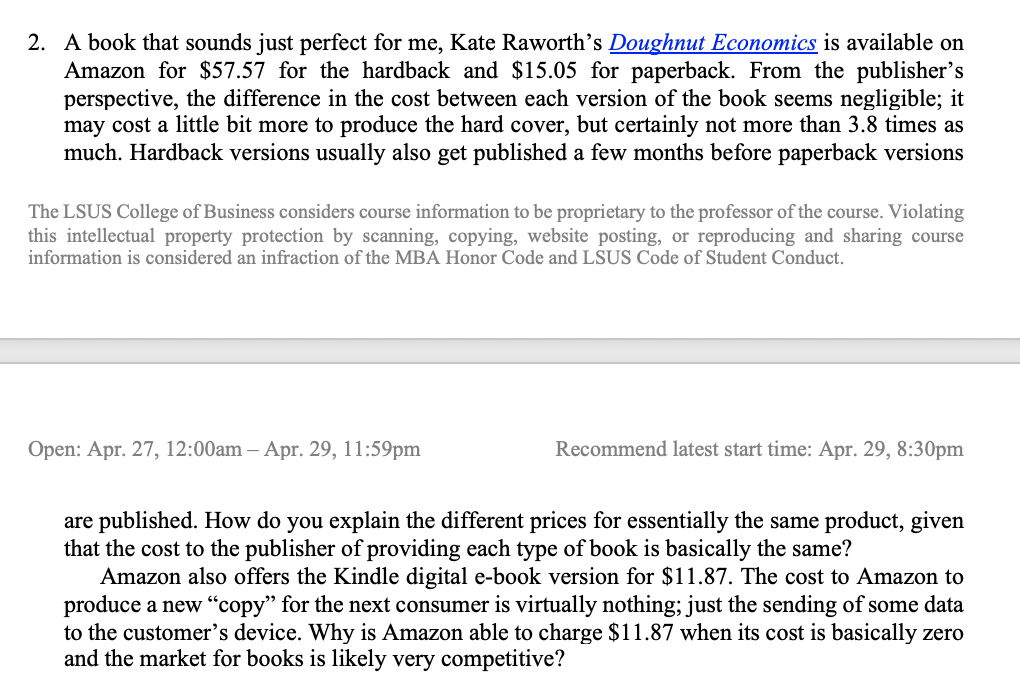Answered step by step
Verified Expert Solution
Question
1 Approved Answer
1. The following shows the demands and marginal revenue in two markets (D1 and MR1, and D2 and MR2) for a price discriminating firm


1. The following shows the demands and marginal revenue in two markets (D1 and MR1, and D2 and MR2) for a price discriminating firm along with total demand, DT, marginal revenue, MRT, and marginal cost MC. 450 D2 MC 425 400 MR2 375 Vertical (Value) Axis Major Gridlines 350 325 300 D1 275 MRT 250 225 MR1 200 175 150 125 100 MC 75 50 25 0 0 250 500 750 1000 1250 1500 1750 2000 2250 2500 2750 3000 D1 -- MR1 D2 - MR2 .......MRT DT MC As with the PPT slides, you can view the data generating these lines; for reference, D1 300 0.1Q D2 450 0.1Q MRT 375 0.1Q DT 375 0.05Q MC 0.00017Q^2 - 0.35Q+ 291.875 a. Compare the demand conditions in each market; i.e. how do the two markets differ in their demand for the firm's product? b. How much total output should the firm produce (for both markets combined)? How should that output be allocated between markets 1 and 2? c. What price should the firm charge in each market? 2. A book that sounds just perfect for me, Kate Raworth's Doughnut Economics is available on Amazon for $57.57 for the hardback and $15.05 for paperback. From the publisher's perspective, the difference in the cost between each version of the book seems negligible; it may cost a little bit more to produce the hard cover, but certainly not more than 3.8 times as much. Hardback versions usually also get published a few months before paperback versions The LSUS College of Business considers course information to be proprietary to the professor of the course. Violating this intellectual property protection by scanning, copying, website posting, or reproducing and sharing course information is considered an infraction of the MBA Honor Code and LSUS Code of Student Conduct. Open: Apr. 27, 12:00am - Apr. 29, 11:59pm Recommend latest start time: Apr. 29, 8:30pm are published. How do you explain the different prices for essentially the same product, given that the cost to the publisher of providing each type of book is basically the same? Amazon also offers the Kindle digital e-book version for $11.87. The cost to Amazon to produce a new "copy" for the next consumer is virtually nothing; just the sending of some data to the customer's device. Why is Amazon able to charge $11.87 when its cost is basically zero and the market for books is likely very competitive?
Step by Step Solution
★★★★★
3.46 Rating (159 Votes )
There are 3 Steps involved in it
Step: 1
1 Market Demand and Output Allocation a The demand conditions in each market differ based on their respective demand curves and marginal revenue curves Market 1 D1 and MR1 exhibits higher demand compa...
Get Instant Access to Expert-Tailored Solutions
See step-by-step solutions with expert insights and AI powered tools for academic success
Step: 2

Step: 3

Ace Your Homework with AI
Get the answers you need in no time with our AI-driven, step-by-step assistance
Get Started


